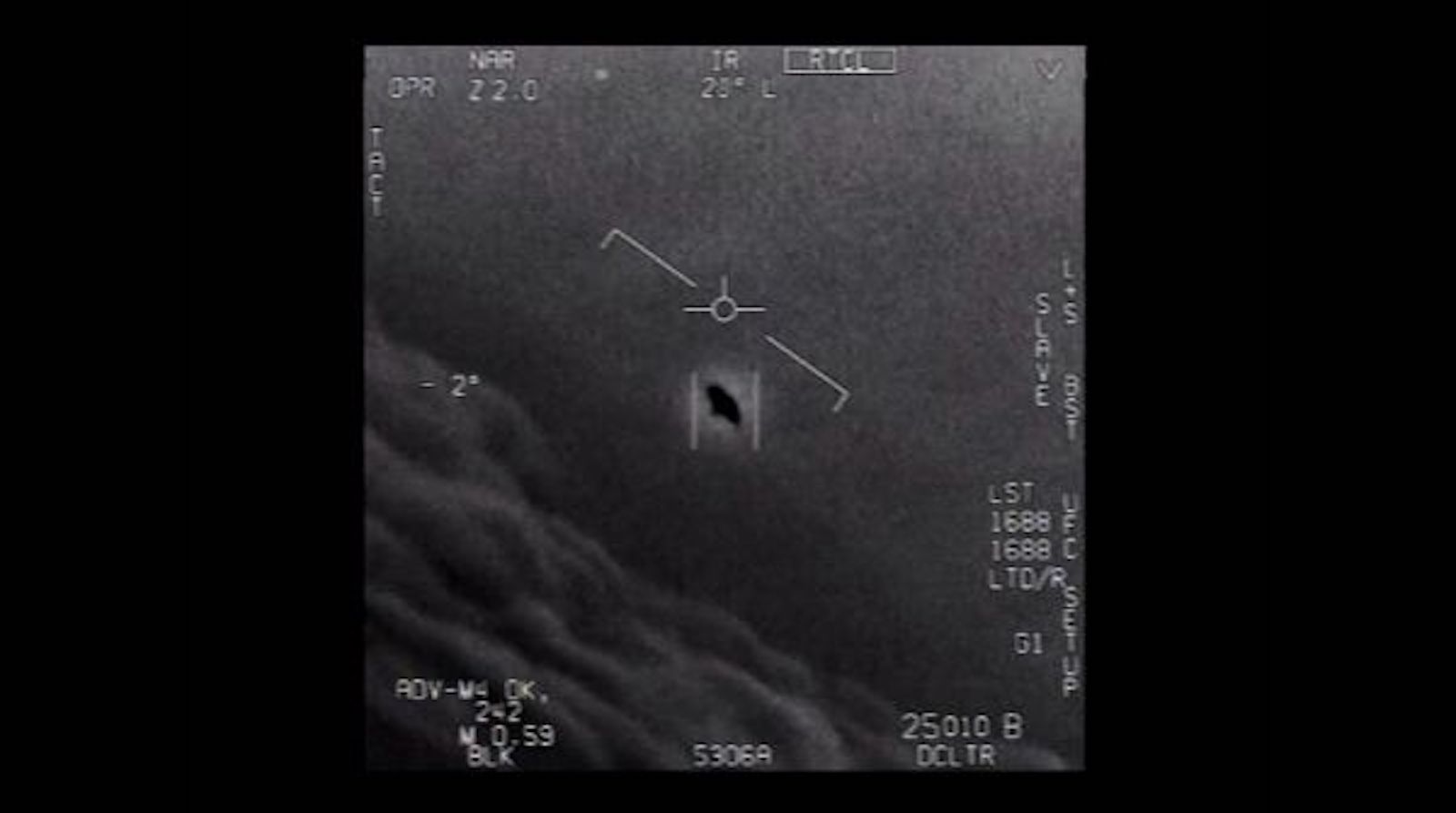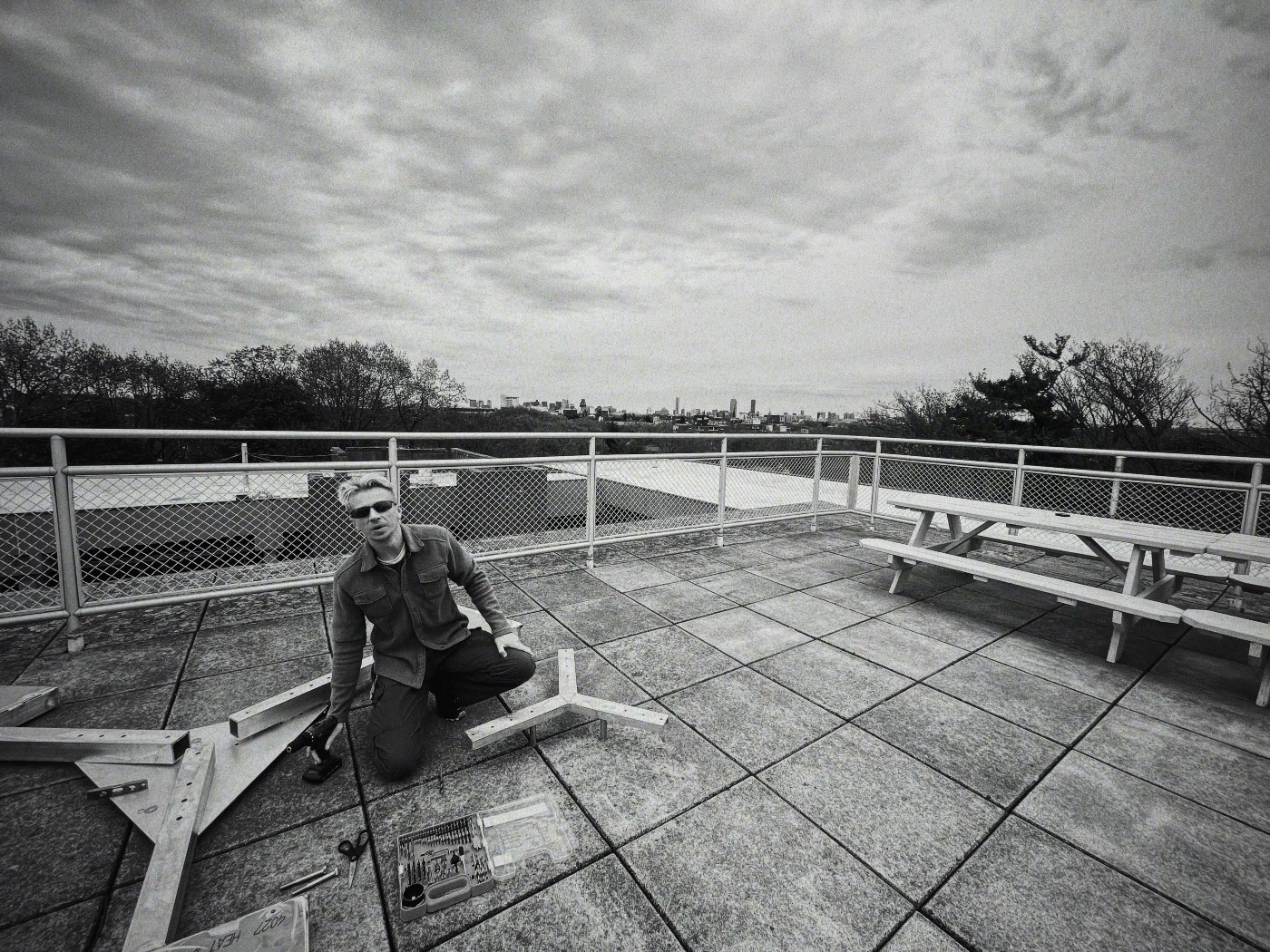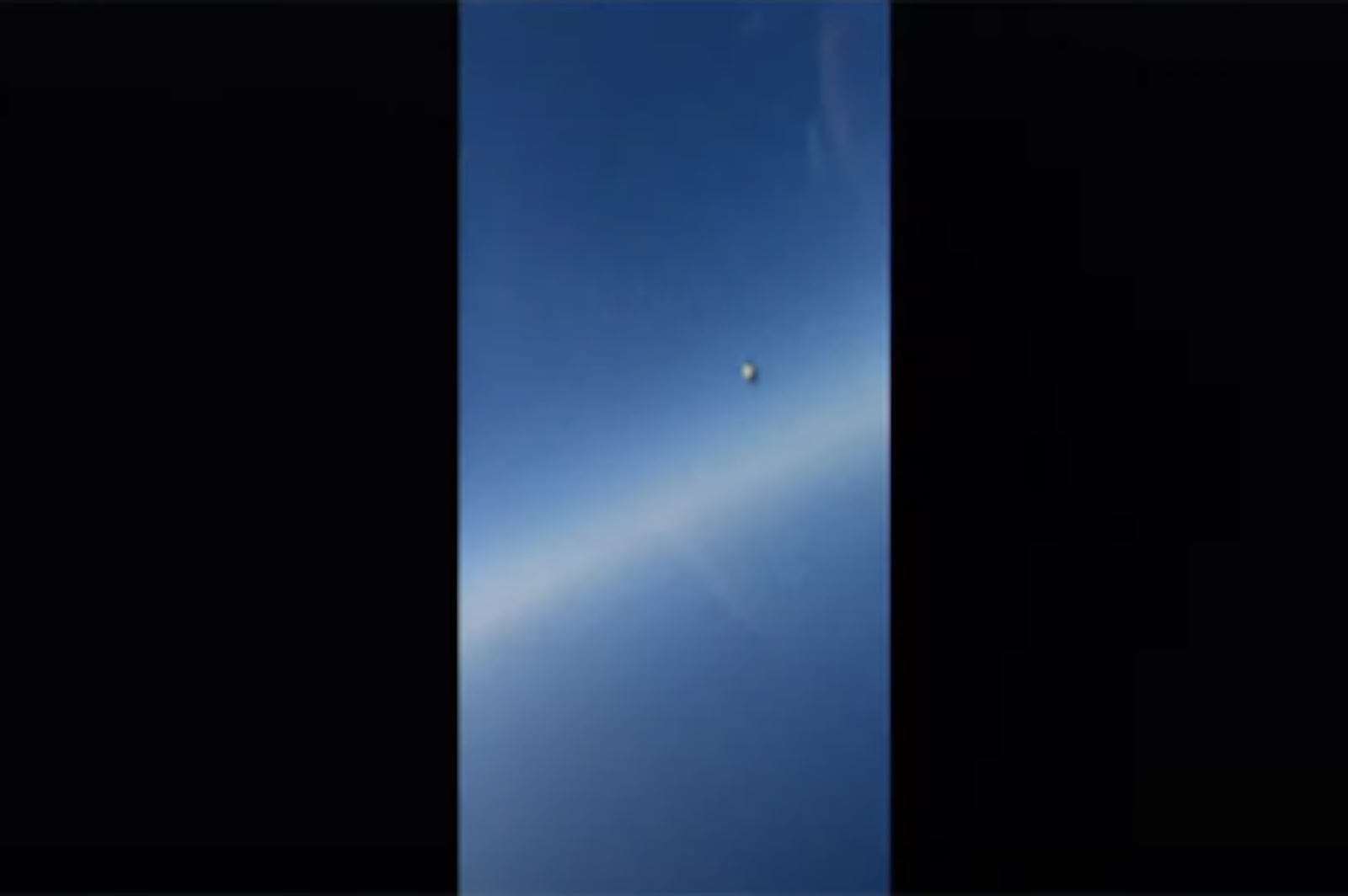How big a deal is NASA's new UFO study?
Experts weigh in.

In early June, NASA announced that it's commissioning an independent study on unidentified aerial phenomena (UAP), as UFOs have recently been rebranded.
The intent is to move the scientific understanding of UAP forward, said Thomas Zurbuchen, NASA's associate administrator for science.
"NASA believes that the tools of scientific discovery are powerful and apply here also," Zurbuchen said in a statement. "We have access to a broad range of observations of Earth from space – and that is the lifeblood of scientific inquiry. We have the tools and team who can help us improve our understanding of the unknown. That's the very definition of what science is. That's what we do."
The UAP study team will be led by astrophysicist David Spergel, previously the chair of the astrophysics department at Princeton University.
"Given the paucity of observations, our first task is simply to gather the most robust set of data that we can," Spergel said in the NASA statement. "We will be identifying what data — from civilians, government, non-profits, companies — exists, what else we should try to collect and how to best analyze it."
Space.com reached out to a number of UAP and UFO (unidentified flying object) groups and leading experts in the field to get their thoughts on NASA's new endeavor.
Related: 2022 could be a turning point in the study of UFOs
Breaking space news, the latest updates on rocket launches, skywatching events and more!
Scientific rigor and transparency
NASA should be congratulated for its willingness to investigate UAP, said Robert Powell, executive board member of the Scientific Coalition for UAP Studies.
"During their press conference, it was clear that they would provide an exemplary approach to the subject by combining scientific rigor, transparency and a fundamental curiosity about this longstanding mystery," Powell said. "All scientists interested in the study of these phenomena should welcome NASA's entry into the arena as an indication that the time has come for the scientific community to openly examine this subject, and it is hoped that Congress will appropriate funding to open the study of this enigma to all of academia."
Powell said that the Scientific Coalition for UAP Studies would urge NASA to tap into the background knowledge that has already been obtained by other science organizations and become familiar with "the pitfalls and successes in the study of this subject." This will enable more rapid scrutiny of UAP development areas that need expanded scientific involvement, he said.
"In order to facilitate a rapid acquirement of known data, the new NASA UAP group should consider identifying an individual that can coordinate data and information sharing with established UAP organizations," Powell said. "This will help avoid duplication of efforts."
Win-win development
Also welcoming NASA's new study is Avi Loeb, head of Harvard's Galileo Project, a systematic scientific search for evidence of extraterrestrial technological artifacts.
The Galileo Project is currently assembling its first telescope system on the roof of the Harvard College Observatory, planning an expedition to retrieve fragments from the first known interstellar meteor, studying satellite data on UAP and designing a space mission to rendezvous with the next anomalous ('Oumuamua-like) interstellar object that zooms into our solar system.
Loeb recently summarized his thoughts about the NASA announcement in an essay titled "Imitation Is the Sincerest Form of Flattery."
Overall, this outcome is gratifying and represents a "win-win" development, Loeb said. "The Galileo Project is now likely to receive a boost to its funding from wealthy individuals and foundations with which I am in close contact," he wrote in the essay. "But most importantly, the Project's scientific mission narrative is now echoed within the government. It does not matter who tells the truth as long as it is being told."
Related: UFO watch: 8 times the government looked for flying saucers

Fishing expedition
Loeb said that it's wonderful that NASA will be engaged in trying to unravel the mysterious nature of UAP. He tags this quest as a "fishing expedition," one that will end up with a mixed bag of natural and human-made objects.
"But even if we have high-quality data on just a single object that demonstrates something else, such as an extraterrestrial technological origin, it would represent the most important discovery in human history," Loeb told The Jerusalem Post recently.
Loeb said he would be delighted to provide any input that could help NASA's study, "because it shares the intellectual DNA of the Galileo Project," he wrote in the essay. "Government agencies and academia should be working together towards the collection of new evidence-based knowledge on UAP."
Open mindedness applies also to scientific research, Loeb said. "We should explore the unknown by seeking evidence agnostically and not assuming what we might find. Gladly, we now know that both the Galileo Project and NASA agree on following this principle."

Right start
"NASA's new UAP initiative is very encouraging, perhaps even more so than the formation of the Airborne Object Identification and Management Synchronization Group in the Pentagon," said Mark Rodeghier, the scientific director of the Center for UFO Studies in Chicago.
UAP are best investigated openly, Rodeghier said, "both because this will allow a range of qualified researchers to be involved, but also because this will permit the results of the investigation to be shared with the public."
The military has advanced sensor capabilities, and that may be crucial for gathering critical data on the phenomenon, said Rodeghier. "But I have concern that findings will, as a matter of course, not be shared with the public. Those of us who have been advocating for years that more resources be devoted to studying UAP have always recommended that this be done openly and transparently."
Rodeghier said that, at this stage, NASA is conducting reconnaissance to learn what data are available and how best to study the phenomenon — which is exactly the right start — and he is not concerned about coordination with the military.
"Down the road, there could be potential for overlap and redundancy in the two efforts, but science is normally best done with multiple research groups working on the same problem, and UAPs are no different," Rodeghier told Space.com. "I do hope that NASA reaches out to the serious UFO community, because we can advise them on data and data-quality issues that we understand from long experience. Our involvement will make their study more robust and comprehensive."
Related: US military taking 'all hands on deck' approach to understanding UFOs
Sharing information
"I think it's great that NASA, the U.S. Navy, and other organizations are starting to take the UFO question seriously. However, I find it strange that the U.S. Air Force, which has been openly investigating this phenomenon since the 1940s, is completely quiet on the issue in modern times," said Michael Masters, a professor of biological anthropology at Montana Technological University.
In his new book, "The Extratempestrial Model" (Full Circle Press, 2022), Masters makes the case that UFOs and aliens are our future human descendants, coming back through time to visit and study their own evolutionary past.
Masters spotlights a number of case studies of close encounters. It seems that whenever a case involved military personnel specifically, he said, the Air Force Office of Special Investigations was all over it. "Why are they so quiet now? Why aren't these offices talking to each other and sharing information and data they've collected across multiple decades?"
Stigma has lifted
"I think NASA's involvement is extremely significant," said investigative journalist Leslie Kean, author of The New York Times bestseller "UFOs: Generals, Pilots and Government Officials Go on the Record" (Harmony Books, 2010).
"We have to remember that when Jimmy Carter was president, he asked NASA to conduct just the sort of assessment that the agency is undertaking now. NASA said no to the president of the United States. Now, NASA has initiated data gathering on its own. Clearly the stigma has lifted. We are living in a different world with respect to UAP," Kean said.
At this stage, NASA's task is simply to gather data, Kean said — to find out what data researchers have, what more they should collect and then determine how to analyze it.
"So we may not be given any major revelations in the near term," she added. "However, this is clearly the first step. And what's really important is that they are looking for data from civilians as well as from government. They will not be working with classified data and will make everything transparent to the public. This should stimulate additional scientific investigation, and it will greatly help lift the stigma even further within the scientific community."
NASA's UAP look-see should help groups like the Galileo Project, and hopefully data can be shared between those two organizations, said Kean. "I hope NASA accesses data from space. If we can document the existence of UAP in space, then we really have something."
Energy, experience and expertise
Kevin Knuth is an associate professor of physics at the University at Albany (State University of New York). He is an active UAP researcher.
"Given that pilots have been, and still are, reluctant to come forward regarding encounters with unidentified aerial phenomena, one must seriously ask whether NASA astronauts have seen significant unidentified phenomena in space," Knuth said. "I would hope that the NASA UAP investigation interviews NASA astronauts to determine what may have been witnessed in space. Perhaps there will also be interviews of former or current cosmonauts?"
Given that civilian organizations are becoming more active in space, there is the potential for a new safety issue involving UAPs, said Knuth. "Does NASA plan to require astronauts to report encounters with unknown objects in space like the U.S. Navy now does?"
Knuth points out that there are a number of former and current NASA scientists actively working to study UAPs via several research groups, including Loeb's Galileo Project. "I would hope that the NASA study team takes advantage of their energy, experience and expertise on the topic," Knuth said.
Anecdotal reports, blurry photos, no solid data
Not everyone is enthusiastic about the NASA UAP effort.
"NASA says that they are establishing an independent group of investigators to look into UAP reports, but it's difficult to see why this is expected to accomplish anything," said Robert Sheaffer, a leading skeptical investigator of UFOs.
For 75 years there have been plenty of people looking into UFO/UAP claims, some of them very educated, and still no solid findings have emerged, Sheaffer said. "So what does NASA bring to the table that wasn't there before? Do people really think that no astronomers or physicists have ever investigated UFO reports until now?"
Sheaffer pointed out that NASA's budget for its UAP appraisal is a modest $100,000, "which in the overheated world of government contracts won't even pay for a single full-time researcher for one year."
By contrast, from 2008 to 2011, the Pentagon's Advanced Aerospace Weapon System Applications Program gave $22 million to the Nevada-based company Bigelow Aerospace Advanced Space Studies to investigate UAPs and their allegedly "collocating" weirdnesses, Sheaffer said.
"It ended up with reports of poltergeists, paranormal wolf-like creatures and malevolent blue orbs attacking people, but they still learned nothing about the nature of UAPs," he said. "The Department of Defense refused to appropriate any money after that."
Sheaffer senses that the problem is not that there is too much data to analyze; rather, there are only anecdotal reports, blurry photos and other shaky information.
"Those who are familiar with the history of 75 years of UFO reports understand the perils of taking eyewitness reports at face value, a lesson that government investigators of high strangeness apparently have yet to learn," Sheaffer said.
Leonard David is author of the book "Moon Rush: The New Space Race," published by National Geographic in May 2019. A longtime writer for Space.com, David has been reporting on the space industry for more than five decades. Follow us on Twitter @Spacedotcom or on Facebook.

Leonard David is an award-winning space journalist who has been reporting on space activities for more than 50 years. Currently writing as Space.com's Space Insider Columnist among his other projects, Leonard has authored numerous books on space exploration, Mars missions and more, with his latest being "Moon Rush: The New Space Race" published in 2019 by National Geographic. He also wrote "Mars: Our Future on the Red Planet" released in 2016 by National Geographic. Leonard has served as a correspondent for SpaceNews, Scientific American and Aerospace America for the AIAA. He has received many awards, including the first Ordway Award for Sustained Excellence in Spaceflight History in 2015 at the AAS Wernher von Braun Memorial Symposium. You can find out Leonard's latest project at his website and on Twitter.
